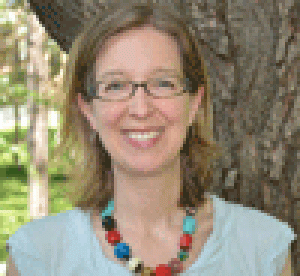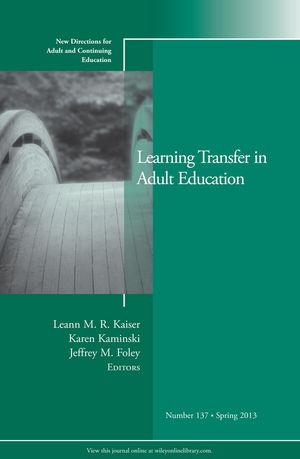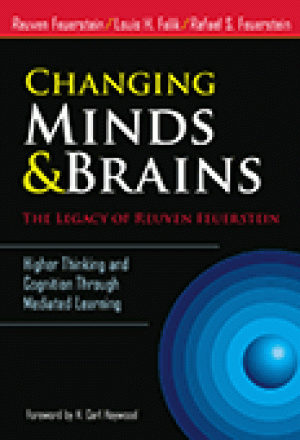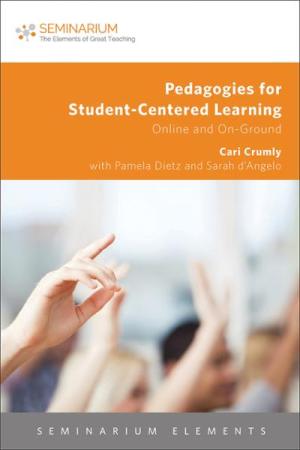Resources

There is a loss of confidence in college education today that is arguably unmatched at any point in modern American history. Government officials and the general public express concern about the goals and directions of higher education and the degree to which its institutions succeed or fail to meet the needs of society. Business leaders and state legislatures charge that our colleges and universities are overpriced, underperforming, and unaccountable to the public. Moreover, the modern institution of higher education faces declining growth and increasing operational complexity; meanwhile, costs continue to soar and resources become ever more difficult to secure. Indeed, the role and very definition of higher education has changed significantly in recent years. The focus now is on issues of relevance, applicability, and preparation for working life outside the academy’s protective walls, and difficult questions are being asked about cost, efficiency, productivity, and effectiveness. One educator, however, in a heartfelt culmination of a lifetime’s devotion to the classroom, offers a vision of education in the deepest sense: “a vision of what education is for in an existential, not merely an instrumental, sense” (4). Marshall Gregory’s posthumous Teaching Excellence in Higher Education is a beautifully written, insightful, humorous, and jargon-free reflection on pedagogical theory and an ethical vision for teaching as it should be, not necessarily as it is. “Excellence,” too-often a vapid buzzword deployed in the literature on higher education today – suitably vague as to commit to nothing, really – is anything but lifeless with Gregory’s masterful handling. The book, edited by his daughter, Melissa Valiska Gregory, associate professor of English at the University of Toledo, after the untimely death of her father, Harry Ice Professor of English, Liberal Education, and Pedagogy at Butler University for many years, reads like a teacher’s memoir, tracing the way he came to think about his students, his vocation, and his vision for education over the years. “Excellence” for Gregory is the “‘extra’ burden of helping students become the kind of citizens, neighbors, voters, spouses, parents, and general thinkers who play all of their life roles with judiciousness, thoughtfulness, and the ability to endure cognitive dissonance, ambiguity, and complexity” (18). A tall order indeed, but anything less, he insists, “is merely the training of expertise.” While higher education has acknowledged for some time that it is woefully deficient in teaching young graduate students to teach, Gregory takes this concern in a refreshing direction, not simply as a matter of classroom mechanics (protocols such as classroom management, syllabus design, testing, grading, and so forth) and the structures of our disciplines; rather, he digs deeper. Our training as researchers and scholars, Gregory argues, have obscured what we, as educators, really need to know in the classroom. He offers the seemingly startling claim that our individual disciplines are, in effect, beside the point; they are, rather, a means to something far more complex. Teaching excellence, he suggests, depends on our awareness of the difference between the intellectual content of our disciplines – the subject matter of our courses – and what he identifies as the “background issues” of ethical dynamics: “The deepest kind of learning is the learning that makes persons desire not some particular thing or some particular doctrine, but instead makes them desire to become someone different – more self-aware, more autonomous, more self-critical, more judicious, more thoughtful, less impulsive, and less in thrall to the clichés of their day and moment” (61). His is a vision informed by cognitive psychology and by the lasting wisdom of the humanist tradition itself. Gregory does this by coupling (re-coupling) intellect with ethics: “The ‘who’ that any of us is ethically is in large part a function of the ‘what’ that any of us knows intellectually” (79). Ethics, in other words, is not something to be grafted onto our teaching, as in statements of classroom conduct for students and guidelines for ethical behavior for faculty; rather, it is part of the very ether of the classroom experience, “running in the background like software code” (6). He sums up this negotiation quite nicely in a set of unspoken questions students ask of teachers and teachers ask of their students: “Are you honest? Are you kind?… Are you sensitive and fair, or are you a selfish pig and an insensitive butt head” (82). The ethical demands on teachers are many, and they are exacting dispositions: “open mindedness, creativity, curiosity, intellectual flexibility, civility, making good arguments, having a nose for evidence, making defensible judgments, and so on” (75). But these demands for ethical commitment – fairness, respect, charity, and civility – are not, Gregory reminds himself as well as his readers, some Hallmark card version of classroom kumbaya. They are defenses, in a sense, in the struggle against a notion of education as narrow utilitarianism and credentialing. It is not that those who have entered the profession with some genuine sense of vocation are unaware of these principles; rather, the disciplinary focus and scholarly commitment to content have obscured them, or trained teachers not to pay them much mind. The reclaiming of “excellence” for higher education is, for Gregory, a teacher of teachers, the performing of an “authentic, autonomous, thoughtful, socially responsible, and morally defensible life” (113).

During a recent conversation among deans they commiserated over how difficult it was to bring about changes in their schools. Despite their best efforts at communicating the need for change, cultivating support, and implementing strategies, change was happening too slow...

For our final post, we each cover an overarching reflection or two from the 2014-15 academic year. Look for fresh content from the Wabash Center in the fall. In the meantime, feel free to visit our ongoing blog Race Matters...

Learning Transfer in Adult Education (New Directions for Adult and Continuing Education, Number 137)
Leann M. R. Kaiser, Karen Kaminski, and Jeffrey M. Foley’s edited volume Learning Transfer in Adult Education offers a concise and readable entry point into the topic of learning transfer. While the stated focus of the volume is adult education, many of the themes and strategies considered will be of interest to those teaching traditional undergraduates as well. According to the editors, “Learning transfer, simply stated, is the ability of a learner to apply skills and knowledge learned in one situation or setting to another” (1). This goal, they suggest, is fundamental to any educational enterprise. In the first chapter, Foley and Kaiser introduce learning transfer and concepts associated with it, providing a useful framing for the chapters that follow. In particular, Foley and Kaiser explain the distinction between “near transfer,” in which the new situation closely resembles the original learning context, and “far transfer,” in which it does not. These and a handful of other key terms reappear throughout the essays; this chapter deserves a careful reading. The chapter also offers a brief overview of some tools available to instructors, many of which reappear or are discussed in greater detail in later chapters. Chapters 2 through 7 offer a variety of perspectives. Nate Furman and Jim Sibthorp (chapter 2) consider experiential learning techniques. These include problem-based learning, project-based learning, cooperative learning, service learning, and reflective learning. Three strong case studies are offered in this chapter, which help demonstrate the techniques in action. One of the techniques, problem-based learning (PBL), is the focus of the contribution by Woei Hung (chapter 3). Hung introduces the distinction between “well-structured” and “ill-structured” problems; the latter are more commonly found in the workplace and thus are productively used in PBL. Hung also comments on the cognitive processes that underlie effective learning transfer; these are complemented nicely by Jacqueline McGinty, Jean Radin, and Karen Kaminski’s study of “Brain-Friendly Teaching” (chapter 5). As the phrase “brain-friendly” suggests, the chapter skews toward pop psychology, but many of the techniques seem to hold potential. Patricia L. Hardré’s contribution (chapter 4), meanwhile, offers a serious engagement with the question of authenticity as it plays out in technology design. The remaining two case studies take up broader concerns. Rosemary Closson (chapter 6) offers a nuanced review of issues surrounding race and cultural difference in learning transfer, combining theoretical and practical discussion. This chapter is especially valuable for instructors interested in race, cultural difference, and pedagogy. Jeani C. Young (chapter 7) offers an equally sensitive treatment of personal change. The volume concludes with a discussion by the editors on “applying transfer in practice.” While those teaching adult learners will especially benefit from the specific examples and case studies, all interested readers stand to profit from this volume. In particular, its wealth of practical examples and classroom strategies offer quick and immediate value to the busy reader.

Published seven years after its first edition, Revisiting the Great White North? reframes the persistence of white privilege in Canadian educational context. As with the first edition, this book interrogates Canadian identity, multicultural discourse, and color-blindness mythologies that serve to hide and maintain white normativity. “It fills a gap in the Canadian literature on the ways Whiteness masquerades in our institutions and within Canadian mythologies” (xxvii). Each of the original chapters from the 2007 edition is reproduced in this volume and is appended by new reflection questions and a brief reframing piece, written by the original author. One author revised her original piece, and one new chapter is added by a scholar from the province of Québec. With the exception of one scholar who taught Canadian students in Buffalo, N.Y., all of the authors are Canadian and represent nearly all of the provinces. The authors are all leaders in anti-racist education, including George Sefa Dei. Their perspectives are diverse not only in terms of region, but also in racial identity, ethnicity, discipline, and gender. Each author shares his or her implication in whiteness through both personal testimony and critical inquiry, contributing to the book’s engaging style and accessibility. This volume contains five sections comprising three to five chapters. The first section focuses on conceptualizing whiteness; its chapters examine how white identity is constructed and reinforced in Canada, and how it presents barriers to teaching and learning. Section two is entitled “Whiteness and Second Peoples,” a phrase referring to the “colonizers of the First Nations” (7). These chapters consider the place of both non-white and white people in antiracism work. The danger of white scholars doing work that is motivated primarily by guilt is noted, pointing to the inadvertent reproduction of white power or an “overly optimistic representation of disadvantaged groups” (91). Section three is concerned with the development and deconstruction of white identity, including the “ability to be colour-blind and not colour-blind simultaneously” as “the hallmark of the achievement of a mature, anti-racist White identity” (119). While the whole book is focused on whiteness and education, it is peppered with references to teaching experience and students’ comments. The last two sections are specifically concerned with teaching and learning. Section four spotlights the pervasive beliefs of white, middle-class university students that Canada is a raceless society and a pure meritocracy. The final section, “The Institutional Merit of Whiteness,” addresses race and identity related issues in education, exposing how whiteness is emphasized in school codes, administration, and policy development. Revisiting the Great White North? is not limited to its Canadian context. It will be of interest to anyone who works to expose white privilege and promote anti-racism in the educational arena. While its attention is given to whiteness and race, it is critically aware of and makes reference to the intersection of race with ethnicity, class, and gender. The book is a must-read for those who wish to participate in an educational discourse that moves beyond liberal platitudes of “sympathetic knowledge about racial and cultural Others,” which “once again re-inscribe Whiteness as goodness and rationality” (186).15

Until his death at ninety-three in 2014, Reuven Feuerstein was a leader in the fields of cognitive development, cognitive assessment, and education. His theory of Structural Cognitive Modifiability through the application of mediated learning experience (MLE) is widely applied in the context of educational and personal remediation for children and adolescents (but also adults) with deep learning disabilities as well as those with cognitive and affective impairments. “Much of Feuerstein’s professional life was spent – working with children and youth who were culturally different or culturally deprived – in Feuerstein’s own terms. These clinical experiences led him to focus on the developmental consequences of sociocultural disadvantage and atypical development” (xiii). The essays in this book were chosen to reveal the evolution of the theory of mediated learning as developed by Reuven Feuerstein. The objectives of the book, according to the editors, are to expose readers to the writings of Feuerstein, to show the organic nature of the theory he developed and its implications for humankind, and to highlight the influence of Judaic culture in the formation and development of the theory (xxiii). MLE is defined as “the interposition out of initiated, intelligent, goal-oriented individuals who interpose themselves between the world of stimuli impinging on the [learner] and interpret what one is supposed to see; not only this, but the mediator must be interested in and concerned with certain elements that the [learner] has to learn” (5). The goal of mediated learning is change, primarily change in the ways in which individuals approach learning and problem-solving situations (xiii). Feuerstein claims there are two main theories that explain the modalities by which individuals learn and develop; one is through direct exposure where no awareness and consciousness is needed, primarily emphasized by behaviorists, and the second, postulated by Piaget, conceives learning as a sole product of the maturational process which makes the interaction with stimuli possible, according to the age and the maturational level of the brain. Feuerstein did not think these two theoretical perspectives really explained the way human intelligence develops. He proposed a third way, which requires the function of the human mediator, hence, his theory of Mediated Learning Experiences (19). The majority of the book reviews the theory and methodology of MLE in great detail and deep explication. Chapters 1 through 8 will be of interest to those desiring to understand the theory and practice of MLE and its application to situations of remediation and work with particular populations. Chapter 1 reviews the development of the concept of modifiability and how MLE’s foundational concept differs from Piaget’s theory of cognitive development and its assumptions. Chapter 2 describes the universal parameters and relevance of MLE and addresses why many do not receive adequate mediation. An important treatment in this chapter is Feuerstein’s differentiation between cultural differences and cultural deprivation in terms of the theory and its application. Chapters 3 to 5 review MLE in greater depth, considering its application in education and other contexts, and review the concepts of the nature of change, behavior, and structural cognition related to mediated learning. Chapter 5 reviews more contemporary and emerging sources in behavioral and scientific fields that support and validate the theory and practice of MLE. The later chapters of the book are of more specific relevance and interest to the readers of this journal. Chapter 6 describes Feuerstein’s search, in his later years, for the genesis and the development of spirituality (morality, ethics, religious belief) in the material and structural aspects of role development and cognition. Chapter 9 provides a very helpful review of how three pedagogies of questioning – Socratic dialogue, collaborative learning, and Talmudic pedagogy – are applied to mediated learning. Chapter 10 brings MLB into the modern context of digital communication and rapidly available information through technology. It provides a very challenging and articulate treatment of the implications of the changing nature of epistemology and pedagogy in the digital age. While MLE tends to be a pedagogy applied to remediation with particular populations, understanding its theoretical basis for understanding cognition is of great value to any educator. In this volume, the later chapters reviewing cognition and spirituality and pedagogy related to the epistemology and cognition in the digital age are well worth reading.

Readers of T.R. Johnson’s ambitious The Other Side of Pedagogy: Lacan’s Four Discourses and the Development of the Student Writer will find some unexpected juxtapositions: Ouija boards and zombies side by side with Hannah Arendt and Keith Richards, student writers jostling with hysterics and narcissists. From this amalgam of unlikely characters, Johnson’s more conventional thesis emerges: contemporary education lacks a sense of its goals, other than a vague notion that student development means initiating students into a loosely-defined ideal of the academy. Johnson suggests that we can rescue ourselves and our students from this stagnation by recognizing what has been there all along: the pulsing unconscious, the unbidden and ultimately irrepressible system of desire that we all carry around with us but like to pretend we do not. This evocation of the unknowable and uncanny is what mobilizes Johnson’s playful evocation of high and low culture. Johnson posits a model of student development based on Lacan’s famous lecture series of the late 1960s. Student writers, Johnson argues, move through four stages, as articulated by Lacan in his theory of the four main types of discourse. In the first two stages, the discourses of mastery and of the University, students are passive receptacles of teacherly authority, their unconscious ideally repressed and their prose, when they can write at all, “empty mimicry” (133). The last two discourses are where things get really interesting. The third discourse is that of the hysteric, whose appearance is “a singularly disruptive performance . . . wreaking havoc with the conventional, lockstep procedure of the bureaucracy, as when Marlon Brando’s character in The Wild One, when asked what he is rebelling against, responds ‘Whaddya got?’” (195). Here, Johnson offers a useful reframing of the problem student, the eye-roller, the note-passer, the interrupter. Instead of understanding these students as impediments to classroom coherence, Johnson casts them as paradoxically more advanced than the good student who always has the right answer. These disruptive students are engaging the unconscious when they exceed and unsettle the roles prepared for them, the social assumptions about who and what they ought to be. However, like Keith Richards writing “I Can’t Get No Satisfaction” in his sleep, the hysteric cannot control his or her discourse, but rather “stumble[s] in a narcotic dream from one summit to the next” (188). The final discourse is that of the analyst, a discourse marked by humility, openness, and equality. To explain this discourse, Johnson imagines a class in which students and teacher listen carefully to one another and thus arrive at unexpected and unplanned places, a class in which students write papers that put multiple texts in conversation with one another to see what emerges. These students and teachers harness the unconscious to the extent that they are engaged in dialogue with the other. If we seek to sustain these productive engagements, we must realize that “the aim of our courses is ultimately to teach our students to love – specifically, to love working and playing with words and texts and ideas, and, through these, to love each other, the wider world, and the ideal of justice, more and more and more” (207). These are inspiring words, and perhaps the most evocative explanation I’ve ever heard of why pedagogical practices like service learning and community engagement – which court unexpected moments of empathy and, ideally, writing and thinking that resonate beyond the self and the stale loop of teacher-oriented writing – are so critical to breathing life into our institutions. One of Johnson’s most powerful contributions in this book is his insistence on seeing students and teachers as complex, embodied people who bring the fullness of their selves and their unconscious desires with them into the classroom. Throughout, I found myself recognizing myself and my students, and recognizing myself in my students. Johnson’s appeal to our fullest personhood allows him to think of pedagogy as a way of understanding people interacting with people, ideas with ideas, and not as a goal-oriented assessment task. Yet, while Johnson’s unpacking of Lacan’s four discourses is illuminating, the way he frames them as a linear developmental schema – something, he acknowledges, Lacan never intended – is at odds with the more associative, recursive nature of the unconscious itself. That is, for a book that delights in the juxtaposition of high and low culture, its structural principles are over determined, as if Johnson is trying to contain the very unconscious he is unleashing. Finally, Johnson’s book fits squarely into a recent trend in composition studies: the urge to retell the history of the field to highlight a neglected thread that, when exposed, could reinvigorate our teaching. Indeed, Johnson spends the first half of the book detailing an exhaustive history of psychoanalysis’s second-class status in the history of writing pedagogy. Byron Hawk’s A Counter History of Composition (2007) and Donna Strickland’s The Managerial Unconscious in the History of Composition Studies (2011) are two examples of recent books that do something similar, turning to psychoanalytic theories of desire and repression to get at what is unknowable, almost magical, about both the activities of writing and of teaching. Johnson’s text is an imaginative and welcome, if sometimes unwieldy, addition to this new canon of writing pedagogy.

“Teachers are like new parents,” Cari Crumly asserts. “[T]hey don’t want to be told how to raise their children or, in this case, how to teach their students. Yet, sometimes, even the least-experienced teacher can introduce new methods that engage, encourage, and promote motivation and participation among students” (4). Crumly lays down the gauntlet repeatedly in this book: “student-centered learning will revolutionize your classroom and reinvigorate your career” (5). As Crumly notes, “student-centered learning is a learning model placing the learner in the center of the learning process. Students are active participants in their learning, learning at their own pace and using their own strategies; they are more intrinsically than extrinsically motivated; and learning is more individualized than standardized” (4). Certainly there are situations in which (and learners for whom) more external structure is appropriate, but Crumly makes a very persuasive case for those being the exception rather than the rule. The good news is that if you are a teacher-centered professor, Pedagogies for Student-Centered Learning gives you everything you need to make changes in your teaching. There is an historical timeline to remind readers that student-centered learning is not a new fad; it’s been with us for centuries. There is a section on teacher-centered classrooms, so we can check whether we are (or are not) as student-centered as we’d like to think we are. There is information on understanding your learning population. There are examples from real classrooms about how student-centered learning can play out, and how it benefits students. Each chapter contains questions for investigation. There is also a list of instructional tactics, with commonly used exercises and the advantages of using each one. Appendices and URLs point readers to even more resources, and Pamela Dietz adds a section on how to bring faculty, administrators, and tech support on board. If you are a visual learner, there are a number of graphical elements that will assist in your assimilation of the material presented. Fortress Press’s new Seminarium: The Elements of Great Teaching series is ideal for twenty-first-century readers. QR codes dot the pages – but don’t worry, if you don’t do QR codes, the URLs are available in footnotes. This book is full of great, useful information – and points readers to more useful information online. Certainly, there are some distractions (for example, misrepresentations of quotations from other thinkers at times). Definitions of student-centered learning can become repetitive over the course of the book. And Sarah d’Angelo’s chapter on student-centered learning in a theater classroom contains a bit more information than is likely to be useful for religious-studies and seminary faculty. But none of these detracts from the benefits of the book as a whole. I have been reviewing books on teaching for ten years or more – this is easily one of the most helpful books I have ever reviewed, and one to which I will return often. I have attempted student-centered learning in a number of courses and contexts; it can be very hard to pull off successfully, and does require a rethinking of our role as faculty. While Crumly suggests that “The student-centered classroom, whether on ground or online, is characterized by individualization, interaction, and integration,” I did wonder how this might work in an online environment (10). I look forward to further exploring these possibilities.

Topping’s book addresses implicitly his concern with contemporary misalignments in Catholic higher educational philosophy. He problematizes several trends that downplay truth-finding and inhibit the freedom of learning. It is his contention that education exists to guide students in learning to order their affections – ordo amoris – besides merely attending to the love of knowledge. For him, education should facilitate learners’ growth towards becoming whole persons. He claims that education is wrongheaded when its direct focus is only on developing skills and overcoming problems of incivility, toleration, and economic sustainability. His book makes clear a fear that in a highly de-Christianized western education, curricula can overestimate the value of the social sciences and overprize the importance of honing techniques, competencies, and self-esteem, and programs are ranked by what would benefit the economy and generate income for its graduates. He expresses this conviction in a variety of ways and contends that if these misaligned trends are not corrected, a crisis awaits the educational industry and even the progress of civilizations. Renewing the Mind is not a monograph devoted to defending an educational philosophy. Nonetheless, Topping invites rethinking current educational trends with a hope for substantive change. He introduces select humanist resources on education from classical antiquity, medieval and early modernity, along with papal writings by Leo XIII, John Paul II, and Benedict XVI. Excerpts include writings by Plato, Aristotle, Augustine, Basil the Great, Bonaventure, Hugo of St. Victor, Aquinas, Erasmus of Rotterdam, Michael de Montaigne, Hyacinthe Sigismond Gerdil, John Henry Newman, Maria Montessori, G. K. Chesterton, C. S. Lewis, Dorothy Sayers, and Christopher Dawson, among others. Readers will appreciate a bird’s-eye view of western educational ideology through the selected readings. These are organized in four parts: nine essays on aims of education, seven essays on matter of learning, nine essays on methods of teaching, and thirteen essays on renewing Christian orthodoxy, learning, curriculum, culture, and Catholic schooling in our milieu. Topping’s inclusion of Plato, Aristotle, Anglican Ronald Knox, and Protestant C. S. Lewis to represent “a philosophy of Catholic education” may puzzle some readers. Why did he not include other non-Catholic Christian thinkers in Catholic collection? Also, why did he collate a largely western, Eurocentric intellectual resource as a primer to the philosophy of Catholic education, when more Catholics today reside in Latin American and the Caribbean and only a quarter of Catholics live in Europe (Pew Research Study on Global Christianity, 2011)? There is no shortage of Catholic and non-Catholic thinkers from Latin America that are impacting Catholic higher education and the book could have benefited from their inclusion. If Topping hopes to reach an ecumenical readership and build bridges with non-Christian cultures, then the missing links of African, Asian, and Latin American Christian (and non-Christian) resources are necessary. If he would include pre-Christian Plato and Aristotle, why exclude Confucius and other schools of thought in other parts of the world on education, virtuous development, and ethics? Criticisms aside, the volume presents fine excerpts on pedagogy for parents, teachers, and administrators, and would be a good supplementary reader for an undergraduate course on the Catholic philosophy of education.

Kate Blanchard Editor’s note: Today’s blog is Kate’s final individual entry for this year of Stories from the Front (of the Classroom). Look for our final collaborative post on Tuesday May 19.For those of us who are lucky enough to work on a traditional academic calendar, the end of...